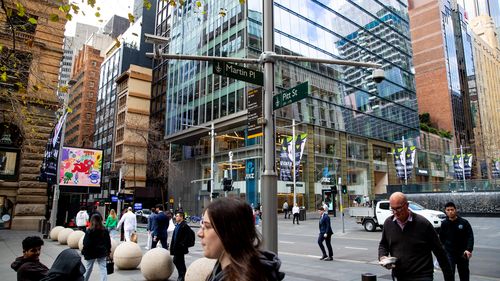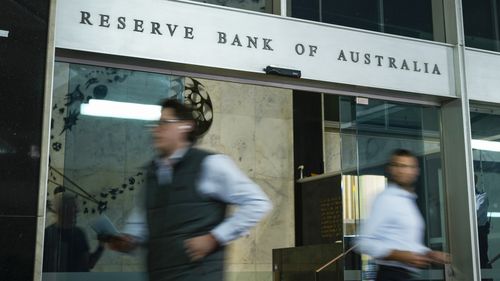Australia will begin enforcing tougher visa rules for foreign students this week as official data showed migration hit another record high, which is likely to further exacerbate an already tight rental market.
From Saturday, English language requirements for student and graduate visas will be increased, while the government will get the power to suspend education providers from recruiting international students if they repeatedly break the rules.
"The actions this weekend will continue to drive migration levels down while delivering on our commitments in the migration strategy to fix the broken system we inherited," Home Affairs Minister Clare O'Neil said in a statement.
A new "genuine student test" will be introduced to further crack down on international students who look to come to Australia primarily to work, while the imposition of "no further stay" conditions will be used on more visitor visas.
The moves follow a raft of actions last year to close off COVID-era concessions introduced by the former government, including unrestricted working hours for international students. The government at the time said rules would be tightened for students that could halve its migrant intake over two years.
Australia boosted its annual migration numbers in 2022 to help businesses recruit staff to fill shortages after the COVID-19 pandemic brought strict border controls, and kept foreign students and workers out for nearly two years.
However, the sudden influx of foreign workers and students has exacerbated pressure on an already tight rental market.
A date released by the Australian Bureau of Statistics on Thursday showed net immigration rose 60% to a record 548,800 in the year to Sept. 30, 2023, higher than the 518,000 people in the year ending June 2023.
Overall, Australia's population rose 2.5% - the fastest pace on record - to 26.8 million people in the year to last September.
The record migration - driven by students from India, China, and the Philippines - has expanded labor supply and restrained wage pressures, but it exacerbated an already tight housing market where rental vacancies hovered at record lows and elevated construction costs restricted new supply.
O'Neil said the government's actions since September have led to a decline in migration levels, with recent international student visa grants down by 35% on the previous year.
Australia's unemployment rate has fallen sharply to 3.7 percent, a large drop from last month's figure of 4.1 percent that, while positive news for the economy, lessens the chance of an interest rate cut anytime soon.
The decrease comes on the back of the economy adding a significant 116,000 new jobs in February, according to the Australian Bureau of Statistics (ABS) – far higher than market predictions of around 40,000-50,000.
"With employment growing by around 116,000 people, and the number of unemployed falling by 52,000 people, the unemployment rate fell to 3.7 percent," Bjorn Jarvis, ABS head of labor statistics, said.

"This was around where it had been six months earlier."
The ABS said the larger-than-expected drop was due in part to a high number of people who had found work in December and January but whose jobs didn't actually start until February.
"In 2022 and 2023, around 4.3 per cent of employed people in February had not been employed in January," Jarvis said.
"In 2024 this was higher, at 4.7 per cent, and well above the pre-pandemic average for 2015 to 2020 of around 3.9 per cent.
"In contrast, we again only saw around 3.1 per cent of employed people in January leaving employment by February, which was similar to last year and has remained relatively constant over time.
"This shows that there is a wider gap than we would usually see between the numbers of people entering employment and leaving employment.

"In addition, in looking ahead to next month, the number of people in February waiting to start work in March was back to around what we would usually see."
The jobs figures, while positive news for the state of the economy, mean the Reserve Bank is less likely to cut interest rates shortly.
Governor Michele Bullock said the RBA wasn't "ruling anything in or out" when it kept rates on hold on Tuesday, but the central bank has continually pointed to the tight labour market as a driver of high inflation.
"The board will continue to pay close attention to developments in the global economy, trends in domestic demand, and the outlook for inflation and the labour market," the RBA's monetary policy statement on Tuesday said.
"The board remains resolute in its determination to return inflation to target."
However, while the jobless figures for February were an improvement from the month before, Harry Murphy Cruise, an economist at Moody's Analytics, said it is likely to increase again soon and reach 4.5 per cent by the end of the year.
"Recent monthly labour force movements are gobbledygook," he said.
"Looking at the trend estimates of the data paints a much clearer. The labour market is ever-so-slowly weakening, with unemployment edging higher over the past 12 months...
"That said, the fact that unemployment has largely held steady since September is a remarkable outcome, especially when combined with the rapid improvement of inflation over the same period.
"Unfortunately, the recent pause is unlikely to continue. The reason is two-fold.
"First, the slowing Aussie economy will hold back the pace of new job creation. To be clear, that's slowing job creation, not falling jobs; close to a quarter of a million jobs are on track to be created this year.
"Second, strong population growth will push labour supply higher. With population growth outpacing new job creation, unemployment will likely nudge 4.5 per cent by the end of 2024."

